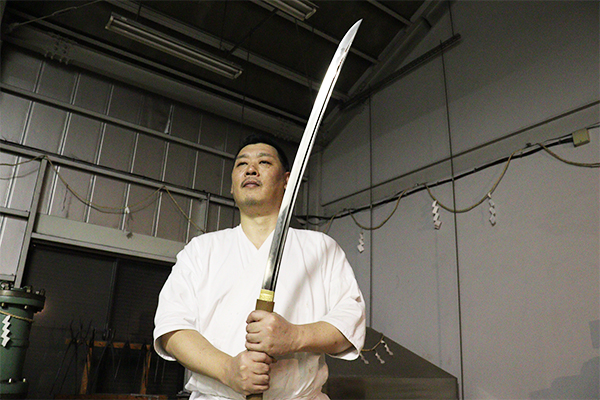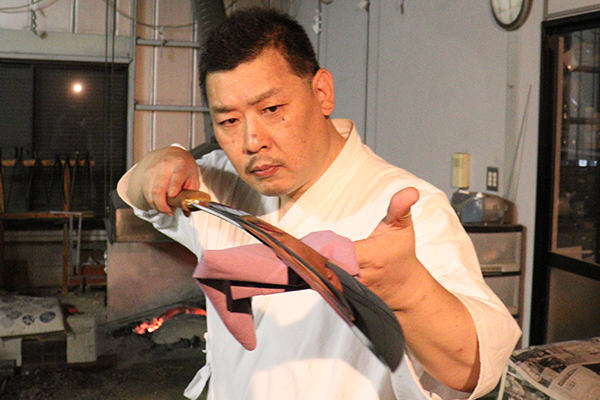The unknown world of Japanese swords, where the spirit and tradition of Japan reside
features

Updated on:2025.08.21


Would you like to witness the traditional craftsmanship of swordsmiths who continue the legacy of Japanese sword history?
One of Japan’s proudest traditional crafts, the “Japanese sword,” has long been cherished by royalty, nobility, and businessmen worldwide, with many renowned swords having found their way abroad over time. Recently it has garnered even more attention, influenced by anime and manga.
The Japanese sword is more than just a weapon. Its exceptional beauty has made it a symbol of faith and authority since ancient times. Over thousands of years of history, swordsmiths have honed their skills, mastering the properties of Japanese steel to forge superior swords, creating intricate blade patterns, and elevating the value of Japanese swords as works of art.
The carefully preserved techniques are not the only aspect; its spirituality can also be regarded as a symbol of Japan’s traditional culture. Despite this however, the number of swordsmiths who make swords has been decreasing in recent years, and there are not many swordsmiths who inherit the authentic traditional skills which have been passed down for over a thousand years.


This time, we had the opportunity to speak with Master Fusahiro Shimojima, who operates one of the few traditional Japanese swords forging workshops in Kamikawa-machi, located in the northern part of Saitama Prefecture.
Master Shimojima is dedicated to preserving the tradition of Mino-legend Seki blacksmithing, which boasts a history of over 700 years, into the present day. He diligently works with clients who seek to own their unique “Omamori-gatana,” and responds to their requests by crafting Japanese swords with utmost dedication. He produces several pieces a year, pouring his heart and soul into each creation.
The crafting of Japanese swords dates back to the mid-Heian period (901-1093). Various schools competed with each other to refine their techniques and methods, culminating in an art form that has been passed down for generations. Modern Japanese swords are crafted using the techniques and skills inherited from this rich history, ensuring the legacy lives on.


The Japanese sword has had significance in Japanese culture since ancient times. Although nowadays the Japanese sword is often depicted in anime and other media as a weapon, its original purpose was rooted in using the sword to ward off illness and evil spirits, embodying a spiritual aspect of protection and wishing for a healthy and prosperous life. This understanding has been passed down from generation to generation.
Through generations, it has been believed that “the divine resides within the sword.” When a child reached adulthood, they were handed a Japanese sword. The true intention behind this was not merely to provide a weapon, but to emphasize self-protection, and to instill the recognition of oneself as a protector of one’s family and lineage.
By prohibiting easy removal of the blade from its sheath, a belief in responsibility is instilled in each sword. However, when one holds a Japanese sword in times of crisis, it must also provide a profound sense of security. For this to occur, it must feel sharp even just by looking at it, and of course, must possess the superior ability to cut as a blade. It is thanks to the blade’s high level of craftsmanship, that one can entrust a sword with a feeling of “protection.”


The Japanese sword has always had an inseparable connection to the lives of the Japanese people. When building a house, they would enshrine a sword in the attic, praying for the safety of the household. When someone fell ill, they would place a sword by the bedside, hoping for a speedy recovery. When a daughter got married, parents would gift her a dagger, entrusting it with the duty of protecting her in their absence. Thus, the Japanese sword has always been a symbol of the Japanese soul, a constant source of strength and security.
Master Fusahiro Shimojima encountered a Japanese sword at a museum when he was in junior high school and was fascinated by its timeless beauty. Immediately after graduating from high school, he became an apprentice under a Japanese sword master and began to engage in forging and sword carving. Later, in 1998, he received authorization for sword making from the Agency for Cultural Affairs and made his debut at the New Sword Exhibition in 2000, where he was nominated for an award.
In 2002, he established a swordsmith workshop in Kamikawa-machi, northern Saitama Prefecture, and became an independent Japanese swordsmith. Today, he serves as a board member of the All Japan Swordsmith Association, passing on his skilled craftsmanship to the present day.

The process of making Japanese swords is extensive and begins with the processing of Tamahagane, the raw material for the sword made from an iron sand. This is done manually, of course. The selected pieces of Tamahagane, which vary in hardness, are then stacked separately and heated in a charcoal fire to create layers of steel. These layers are folded over to create skin iron.
Through further processing, such as bending the skin iron, the steel, which was initially straight, gradually takes on the characteristic curved shape of a Japanese sword. It is then heated, hammered, polished, and sharpened until it reaches completion.
To complete a Japanese sword, in addition to forging, various sword fittings such as the Habaki (blade collar) and Tsuba (handguard) are necessary. Therefore, each craftsman works together to create a single Japanese sword.


Here at “Katanakaji Fusahiro,” you can experience the roaring flames, the colors of the heated tamahagane, the sound of iron being struck, and the hot air up close. The intensity of this experience will likely be so impactful that you may not have encountered anything like it before.
This is a great opportunity to deepen your understanding of the Japanese sword, which has been intertwined with Japanese life and values, and to witness the thoughts and production process of its creators. Why not visit us for a tour?
For tour details, visit:
https://saitama-supportdesk.com/experiences/samurai-sword-the-ultimate-experience/






